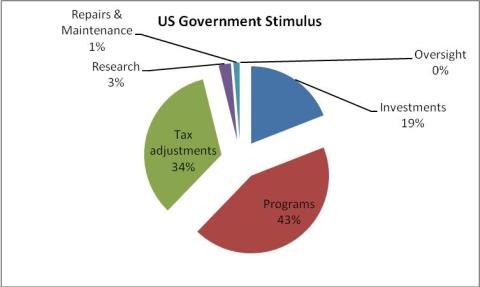Hand on hot stove = pain
February 2, 2009
In the interest of full disclosure, I do believe that government has a role in society. Protecting property rights, enforcing the law and keeping our borders secure are some of the most important functions. However, manipulating the economy, owning businesses or running businesses are not functions government is equipped to do well.
I have been very disappointed that over the course of this economic unwinding the press (some of it well respected) and so-called “free market” economists have jumped on the Keynesian bandwagon with such great fervour. It seems that everywhere I turn there has been a newspaper or an economist arguing for a big stimulus and a fast stimulus.
My disappointment has been a bit muted more recently because some pundits are beginning to question the size and effectiveness of the American stimulus package and our more modest “made in Canada” version.
As we are all now well aware, the American mortgage market got way out of hand with people taking on debt that they had no ability service. Then these debt obligations were being packaged up, securitized and resold on the basis that, because these sub-prime mortgages were distributed piece-meal through these securities, the risks were mitigated.
You’ll see a previous post of mine (read it here) where I outline, from my perspective, the cause of our current malaise. History aside, fundamentally we had people borrowing money they couldn’t afford to pay back. They were banking (pun intended) on their real estate rising in value in perpetuity. They took risks that were far too big – they were excessive.
Now the aberration of the current stimulus package, with the Troubled Asset Relief Program (“TARP”) leading the way, is that it is ultimately going to promote excessive risk. The US government has put $45 billion each into Citigroup and Bank of America instead of letting them die. By propping up these failed enterprises, the US government has sent the loud and clear message that business can take massive risk and reap the rewards (bet big, win big) and, at the very worst, come out even if things go south.
The government has removed the down side of risk.
Think about this in terms of a poker game. If players know that worst case scenario was to come out even then they would always bet huge sums on risky hands. Without the potential to lose their entire float, there is no incentive for a player to think about the potential reward or loss in light the risk he is taking. This is the same behaviour we will begin see from private enterprise like US banks and auto makers.
Scarcity and incentives are two tenets of economics. We all make decisions to invest, save or spend our money. If we remove incentives created by risk then that it is not hard to see how our decisions will be distorted.
When kids put their hands on a hot stove there is a repercussion. Similarly, there must be repercussions for a failing business. There must be pain.
$18 billion in loans to “prove financial viability”
December 19, 2008
In today’s Wall Street Journal the Bush government announced $18 billion in loans and non-voting warrants for the Detroit-three. See article at:
http://online.wsj.com/article/SB122969367595121563.html.
Bush is no longer a Commander in Chief, but is now “CEO in chief” (credit to a recent FORTUNE magazine article). I’m one who just does not believe government should in business. I don’t think they should run airlines, investment firms, train companies, shipping companies, own substantial real estate or compete with private industry.
Government has its place, it’s just not in business.
I’m also not a believer that one should reward failure. People respond to incentives (incentives and scarcity are two tenets of economics). If we create incentives for failure it will beget more failure. Incentives will work to curb behaviours for everyone from fat cat auto executives all the way down to babies and puppy dogs.
I recognize, as Bush states in his announcement, that we are in exceptional times. I also understand that letting these three employers disappear would create havoc. But why not let them go into bankruptcy? Why not force them through the process of purging of union contracts that see workers earning well over $100,000 just for being there and not even working? Why not force them to rethink their entire method of business in order to compete more favourably with tightly run and nimble competitors (Toyota, Volkswagen and Tata, for example).
There would be fallout, no doubt. Creditors would get cents on the dollar. Workers would be let go (but that $18 billion could go a long way toward retraining them or employing them in the government’s blessed infrastructure projects). Executives would get golden parachutes. But the short term pain would set the stage for a proud and profitable recovery.

